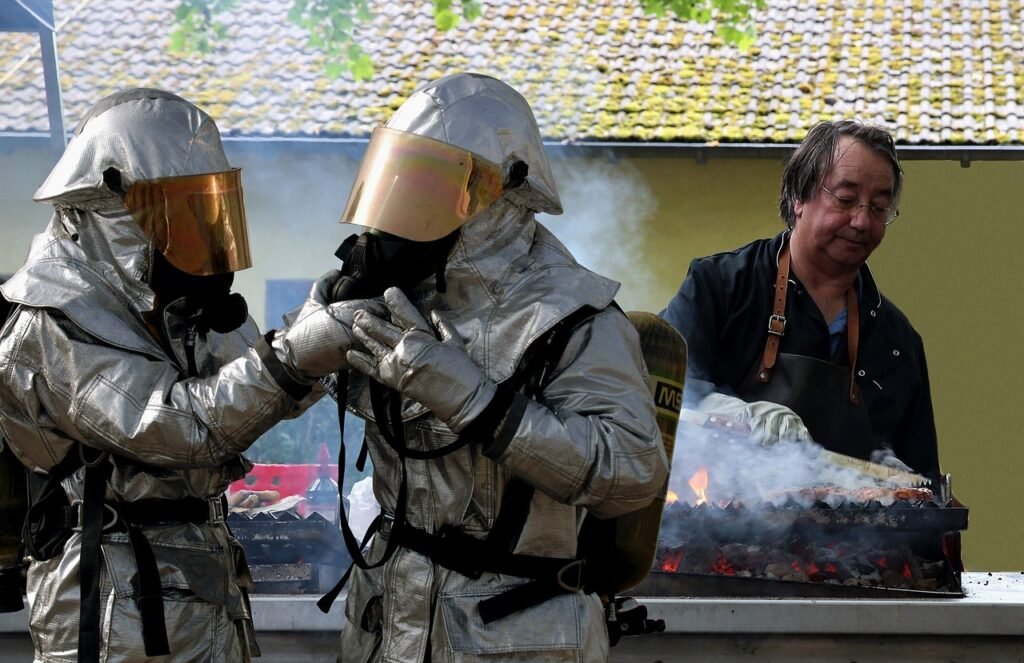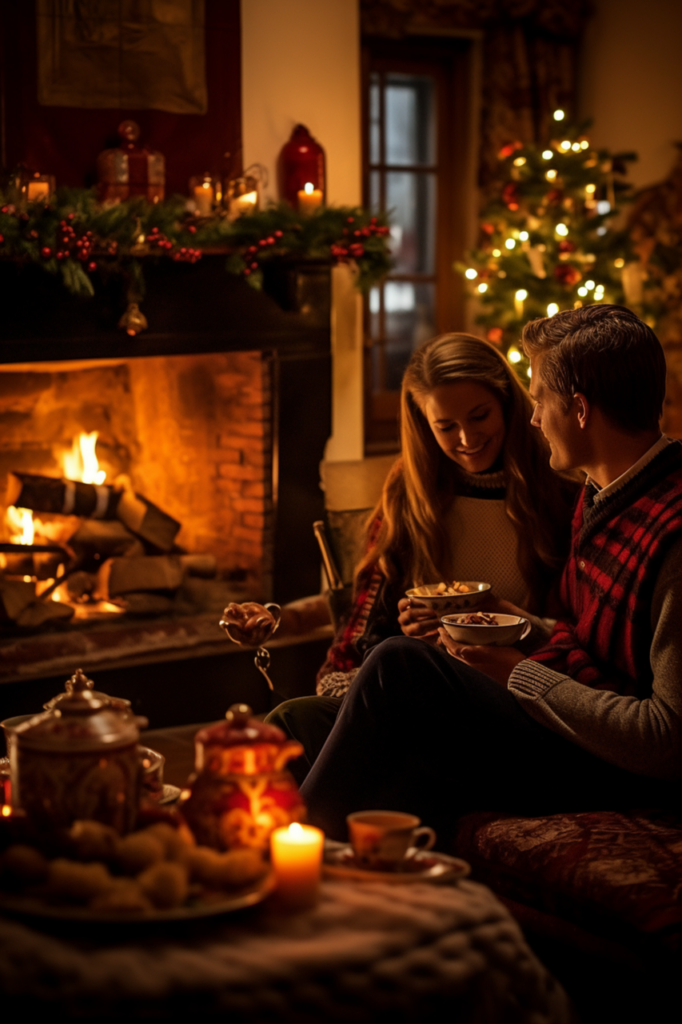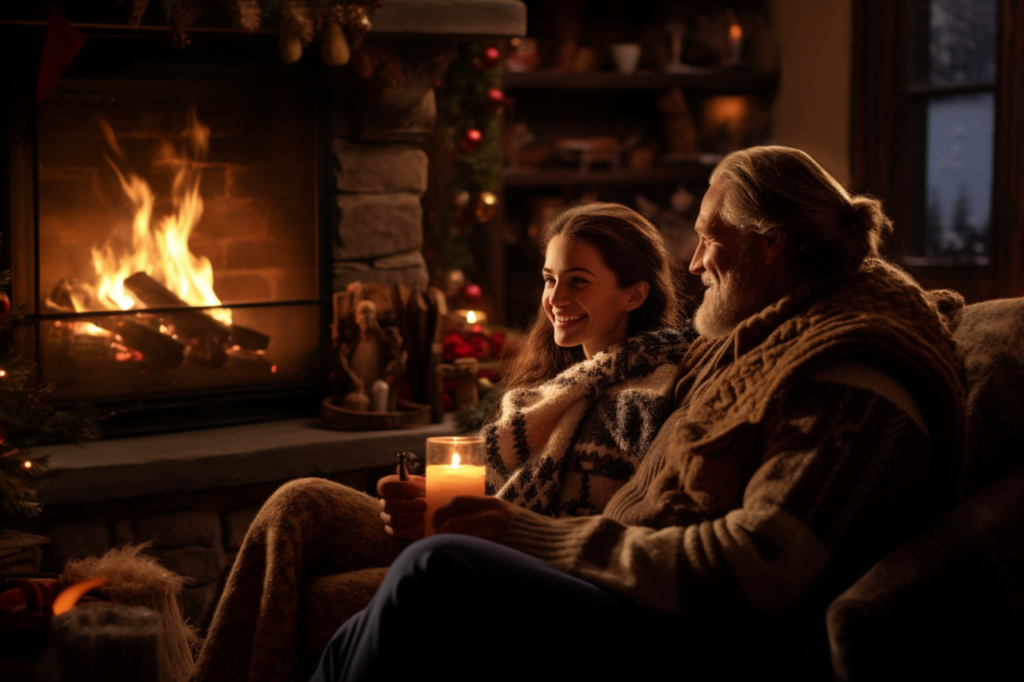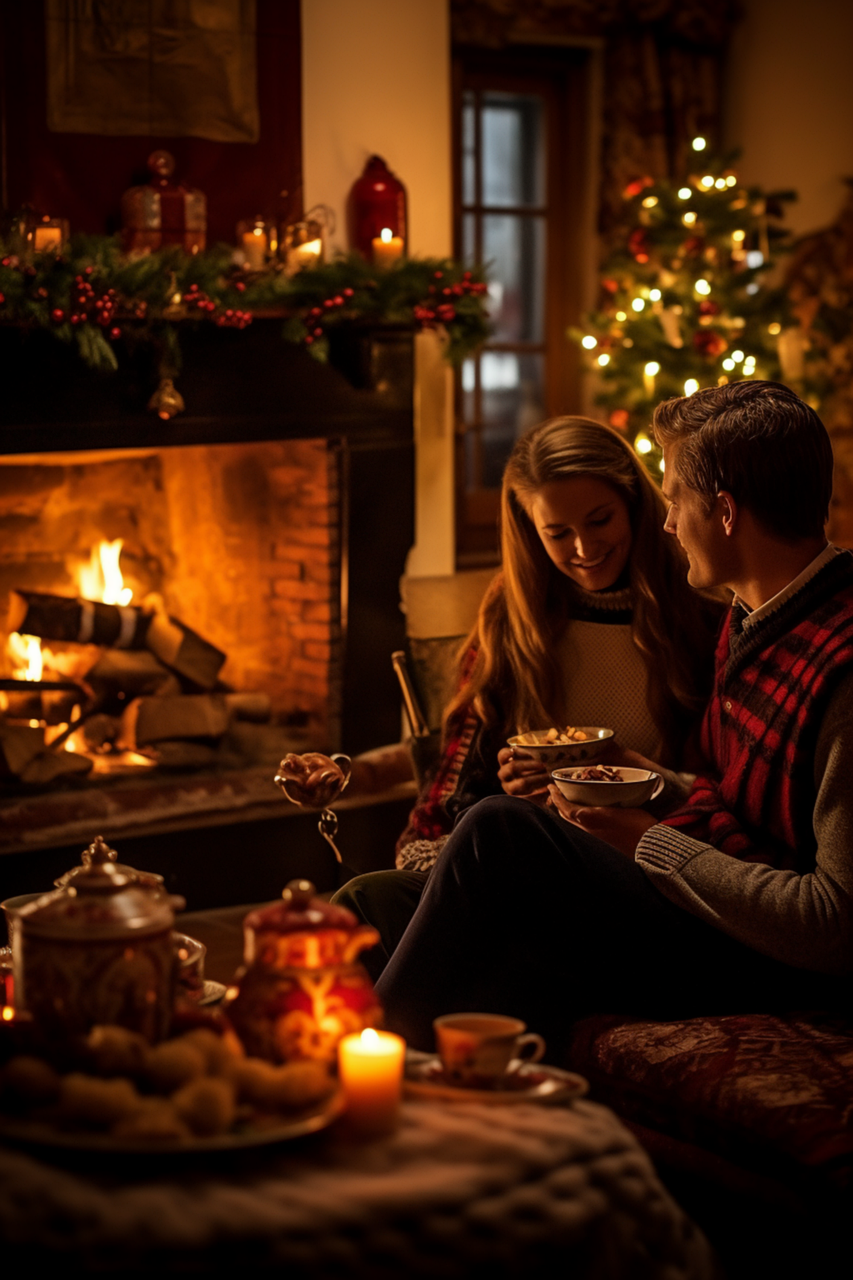Imagine snuggling up next to a cozy fireplace on a chilly winter evening, feeling the warmth radiate through the room as you sip on a hot cup of cocoa. Fireplaces can create a comforting and inviting atmosphere in any home, but it is crucial to ensure that they are safe and secure. In this article, we will explore some essential fireplace safety tips that will help you create a safe and sound home environment. From preventing chimney fires to practicing caution with decorative materials, these tips will give you the peace of mind you need to fully enjoy the beauty and warmth of your fireplace.
Choosing the Right Fireplace
When it comes to choosing a fireplace for your home, there are several factors to consider. The type of fireplace you select will depend on your personal preferences, the layout of your home, and your heating needs. Here are a few fireplace types to consider:
Gas Fireplaces
Gas fireplaces are a popular choice for many homeowners due to their convenience and ease of use. These fireplaces require minimal maintenance and are highly efficient in terms of heat output. Additionally, gas fireplaces can be turned on and off with the flip of a switch, providing instant warmth whenever you need it.
Wood-Burning Fireplaces
For those seeking a more traditional and authentic fireplace experience, a wood-burning fireplace may be the ideal choice. There is something truly mesmerizing about the crackling sound and the comforting scent of a wood fire. However, wood-burning fireplaces require more maintenance and cleaning compared to gas fireplaces.
Electric Fireplaces
Electric fireplaces are a convenient and versatile option, especially for those living in apartments or smaller spaces. These fireplaces don’t require a chimney or venting, making them easy to install. Electric fireplaces also provide the flexibility of adjusting the heat and flame settings to create a cozy ambiance without the need for actual fire.
Safety Features to Look for in a Fireplace
Regardless of the type of fireplace you choose, it is essential to prioritize safety. Look for the following safety features when selecting a fireplace:
-
Temperature Control: Opt for a fireplace that allows you to set and maintain a desired temperature. This helps prevent overheating and ensures the safety of your home.
-
Automatic Shut-off: A fireplace with an automatic shut-off feature is crucial, especially in case you forget to turn it off. This feature provides peace of mind and prevents potential fire hazards.
-
Child Lock: If you have young children or pets at home, consider a fireplace with a child lock feature. This added precaution ensures that little ones cannot accidentally activate the fireplace or get too close to the flames.
-
Cool-to-Touch Glass: A fireplace with a cool-to-touch glass front is essential, as it prevents accidental burns. This feature is particularly important if you have curious children or pets who may inadvertently touch the glass.

This image is property of pixabay.com.
Proper Installation and Maintenance
Proper installation and regular maintenance are key to ensuring the safety and longevity of your fireplace. Here’s why professional installation is crucial:
Importance of Professional Installation
Fireplace installation should always be done by a professional. They have the necessary expertise and knowledge to handle the complexities involved in fireplace installation, such as venting and gas connections. Professional installation ensures that the fireplace is correctly installed, minimizing the risk of gas leaks and other safety hazards.
Regular Chimney Cleaning and Inspections
Regular chimney cleaning and inspections are vital to maintain the safety and efficiency of your fireplace. Over time, creosote buildup can occur in the chimney, increasing the risk of chimney fires. Hiring a professional chimney sweep annually will help remove any creosote, debris, or obstructions, ensuring that your fireplace functions safely and efficiently.
Proper Ventilation and Airflow
Proper ventilation and airflow are essential for the safe operation of your fireplace. Ensure that the chimney flue is open before lighting a fire, as it allows the smoke and gases to escape. Adequate airflow prevents the buildup of carbon monoxide, a deadly gas that can be produced by a poorly ventilated fireplace.
Safe Fuel Options
The type of fuel you choose for your fireplace can have a significant impact on safety. Each fuel option has its own benefits and safety precautions. Here’s what you need to know:
Gas Fireplaces: Benefits and Safety Precautions
Gas fireplaces offer numerous benefits, including convenient on/off controls, high efficiency, and clean-burning flames. However, it is crucial to follow these safety precautions when using a gas fireplace:
- Ensure proper ventilation to prevent the buildup of carbon monoxide.
- Regularly inspect and maintain gas connections and valves.
- Keep flammable materials away from the fireplace and its surrounding area.
Wood-Burning Fireplaces: Safety Measures to Follow
Wood-burning fireplaces provide a nostalgic and cozy atmosphere but require extra safety precautions due to the open flame. Here are some important safety measures to follow when using a wood-burning fireplace:
- Always use dry and seasoned wood to minimize smoke and creosote buildup.
- Install a sturdy screen or glass door to prevent sparks from escaping.
- Never leave a wood fire unattended and ensure it is fully extinguished before leaving the room.
Electric Fireplaces: Advantages and Safety Tips
Electric fireplaces are a safe and convenient option, but it’s still important to practice proper safety measures. Here are some advantages and safety tips for electric fireplaces:
- Electric fireplaces do not produce real flames, reducing the risk of accidental fires.
- Check the cord for any wear or fraying regularly and refrain from using damaged cords.
- Keep flammable materials away from the unit and avoid overloading electrical outlets.

This image is property of pixabay.com.
Fireplace and Surrounding Area Precautions
Alongside choosing the right fireplace and understanding safety features, taking precautions in the surrounding area is equally important. Consider the following measures to ensure a safe environment:
Installing a Protective Fireplace Screen or Glass Door
Installing a protective screen or glass door in front of your fireplace is essential for preventing sparks from flying out and potentially causing a fire. These safety barriers also keep children and pets at a safe distance from the flames, reducing the risk of burns and accidents.
Keeping Flammable Items Away
It is crucial to keep flammable items such as blankets, curtains, and furniture a safe distance away from the fireplace. These items can easily catch fire if they come into contact with sparks or flames, posing a significant risk to your home and loved ones.
Maintaining Sufficient Clearance
Ensure that your fireplace and its surroundings have sufficient clearance for air circulation and safety. Check the manufacturer’s guidelines for the recommended clearance distances and follow them strictly. This prevents overheating and reduces the risk of accidental fires.
Creating a Childproof Zone
If you have young children, creating a childproof zone around the fireplace is essential. Use safety gates or other barriers to prevent access to the fireplace area. Educate your children about the dangers of fire and the importance of staying away from the fireplace.
Proper Use of Fireplace Tools
Using fireplace tools correctly is crucial for both safety and efficiency. Here’s what you need to know:
Selecting High-Quality Fireplace Tools
Investing in high-quality fireplace tools is essential. Look for tools made from durable materials that can withstand high temperatures. Ensure that the tools have comfortable handles and are designed specifically for fireplace use to avoid accidents or damage.
Using Tools with Caution
Always exercise caution when using fireplace tools. Avoid using excessive force or swinging tools too close to the flames, as this can cause sparks or hot embers to fly out. Use tools slowly and methodically to prevent accidents or injuries.
Storing Tools Safely
When not in use, store fireplace tools in a safe and secure location. Keep them away from children and ensure they are not near flammable materials. Storing tools properly reduces the risk of accidents, especially if there are young children or pets in the home.

This image is property of pixabay.com.
Fireplace Safety Practices
Adopting good fireplace safety practices is essential for a safe and enjoyable experience. Here are some important practices to follow:
Never Leave the Fireplace Unattended
Never leave a burning fire unattended. Ensure that someone is always present in the room when the fireplace is in use. This helps prevent accidents, such as sparks igniting nearby objects or the fire spreading uncontrollably.
Using a Sturdy Fireplace Grate
Using a sturdy fireplace grate is crucial for safety and efficiency. A grate elevates the fire, allowing for better airflow and reducing the risk of sparks falling onto the floor. Choose a grate that fits your fireplace properly and is made from durable materials to withstand high temperatures.
Extinguishing and Disposing of Ashes Safely
Properly extinguishing and disposing of ashes is essential to prevent accidental fires. Allow the ashes to cool completely before carefully transferring them to a metal container with a tight-fitting lid. Store the container outside, away from combustible materials, until the ashes can be properly disposed of.
Fire Safety Equipment
In addition to practicing fireplace safety, it is essential to have the right fire safety equipment in your home. Consider the following:
Installing Smoke and Carbon Monoxide Detectors
Install smoke and carbon monoxide detectors throughout your home, especially near sleeping areas. Regularly test these alarms to ensure they are in good working condition. This early warning system can save lives in the event of a fire or carbon monoxide leak.
Keeping a Fire Extinguisher Handy
Keep a fire extinguisher in a readily accessible location near the fireplace and familiarize yourself with its proper use. Ensure that the extinguisher is suitable for extinguishing different types of fires, such as those caused by wood, gas, or electrical sources.
Educating Family Members about Fireplace Safety
Educating your family members about fireplace safety is crucial to maintaining a safe home environment. Here are some important aspects to focus on:
Teaching Children about Fire Safety
Teach children about the dangers of fire and the importance of fireplace safety. Explain the risks associated with playing near or touching the fireplace, and establish clear boundaries and rules. Encourage children to bring any safety concerns to your attention immediately.
Establishing Clear Rules and Guidelines
Establish clear rules and guidelines for fireplace usage in your home. Make sure everyone understands the importance of following safety protocols, such as never leaving the fireplace unattended and keeping flammable materials away. Consistently reinforcing these rules helps create a safe and responsible environment.
Emergency Preparedness
Even with established safety measures in place, it is important to be prepared for unforeseen emergencies. Consider the following:
Creating an Emergency Escape Plan
Create an emergency escape plan for your home that includes a designated meeting place outside. Practice this plan regularly with your family members so that everyone knows what to do in case of a fire or other emergency. This preparation can save valuable time in a critical situation.
Knowing When to Call Emergency Services
In the event of a fire or emergency, it is crucial to know when to call the appropriate emergency services. Do not hesitate to call the fire department if you cannot control or extinguish a fire on your own. Promptly contacting emergency services can help prevent the situation from escalating further.
Regular Maintenance and Inspection Checklist
Regular maintenance and inspection of your fireplace are essential to ensure its safety and efficiency. Here’s a checklist of important tasks:
Checking for Cracks or Damaged Brickwork
Inspect the brickwork or masonry surrounding your fireplace for any cracks or signs of damage. Cracks can compromise the structural integrity and increase the risk of fire hazards. If you notice any damage, consult a professional fireplace technician for repairs.
Cleaning and Inspecting Chimney Flue
Regularly clean the chimney flue to remove any creosote or debris buildup. This reduces the risk of chimney fires and ensures proper ventilation. Inspect the chimney flue for any obstructions and repair or remove them promptly.
Inspecting and Replacing Firebrick, Gaskets, and Seals
Inspect the firebrick, gaskets, and seals in your fireplace for any signs of wear or damage. These components play a crucial role in maintaining the safety and efficiency of your fireplace. Replace any damaged parts promptly and consult a professional if needed.
By following these comprehensive fireplace safety tips and guidelines, you can create a safe and sound home environment for you and your family. Remember, prioritizing safety is key when enjoying the warmth and comfort of a fireplace. Stay warm and stay safe!




